Koalas' Social Behavior
Koalas have their own unique social behaviors and lifestyle. Even though koalas are considered as the solitary animals yet still one way or another they do exhibit unique aspects of their own social behaviors. When an animal or organism interacts with another animal or organism of the same species, this interaction comes within the context of social behavior. Therefore; the social behavior of the koalas will highlight its interactions as a whole with other koalas.
Koalas possess a unique degree of social behavior which can be categorized on the basis of their vocalization, territorial interactions, scent marking, breeding and maternal life.
Based on these interactions, the social behavior of the koalas can be categorized on the basis of the vocalization, territory sharing, scent marking, breeding and maternal life. A brief explanation about each of these social behaviors will understand the overall lifestyle of the koalas which is rather obscure to the rest of the world.
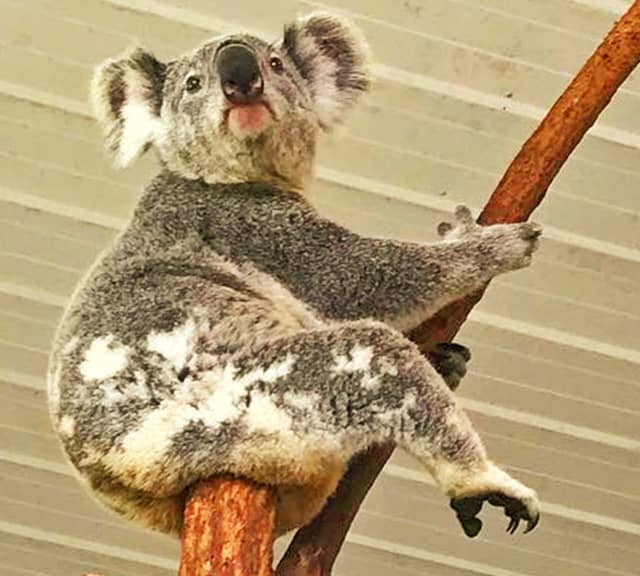

Vocalization is the basic social behavior among the koalas to communicate with one another. Koalas vocalize for about 15 minutes per day on average. Vocalization helps the koalas to not only stay connected with their community but also to manage their lifestyle as well. For example, a male koala uses loud vocalizations to announce his territorial dominance within the area over the other males. This way the other males know that a certain area is dominated by a particular koala and whether they should avoid him or challenge him for the crown.
Vocalization is one form of a social behavior among the koalas which helps them to communicate with one another. Vocalization is most common among the dominant male koalas, koala mothers and the koala joeys.
This social behavior is very common during the breeding season. During a one on one fight the male koalas make louder grunts to scare off the rival. Similarly; a koala joey makes squeaking vocalizations, if it feels threatened or loses her mother for a time being. The mother responds and gets back to her joey to secure it. Female koalas Koalas don't vocalize much and only vocalize when feel threatened.
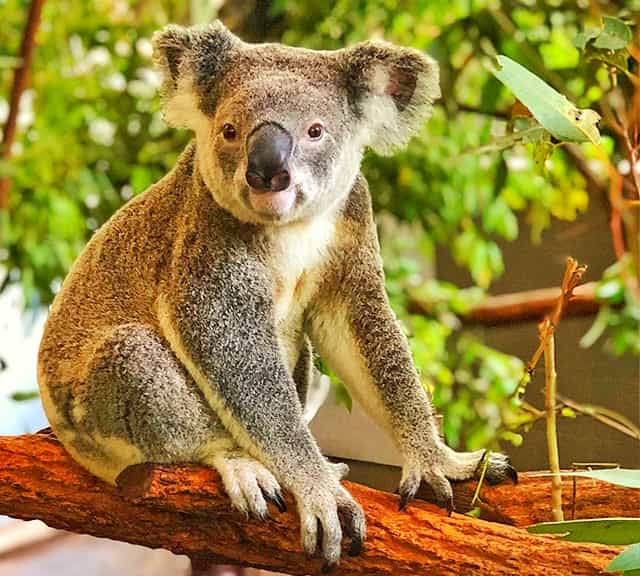

Territory management is a very common social behavior among the koalas. Usually the dominant male koala manages its territory and in its territory he may have as many females as possible. The dominant male makes sure that no other male koala enters this territory. He either scares him away or fight him off. Female koalas in this territory under the dominant male tend to live a solitary life.
Usually the male koalas manage and establish their own territories and may have many solitary females within this territory. Female koalas tolerate their juvenile daughters in their territories while juvenile sons are forced out.
Female koalas are mostly tolerant to other female koalas. Under droughts both male and female koalas may also battle with one another to get the greenest tree. Females usually tolerate their daughters (when they grow up)within their territories but they expel their juvenile sons out of the territory. This also prevents inner breeding within koalas' social lifestyle.
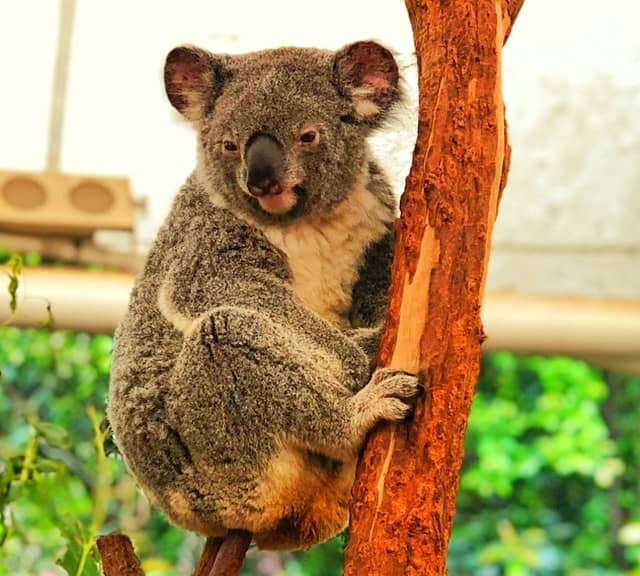

Scent marking is another social behavior among the koalas. This social behavior is very common within the dominant male koalas. Male koalas exhibit this social behavior to mark their territory and dominance within the area. Every male koala has its own smell of the scent. Therefore; a male koala understands territorial information on the basis of the scent. Male koalas excrete scent from their chest.
Scent making is another social behavior which is very common among the male koalas. The dominant male not only marks its territory but also send warnings to the rival males through this scent.
The secretion area which secretes the scent is clearly visible within the chest of the adult male koalas and it is called also the sternal gland area. If an intruding male koala ignores the scent warnings of the dominant male in the area, it means a one on one battle is likely to take place between the dominant male and the challenger. Female koalas when in heat have their own unique scent and the adult male koalas pick the females' scent for mating.
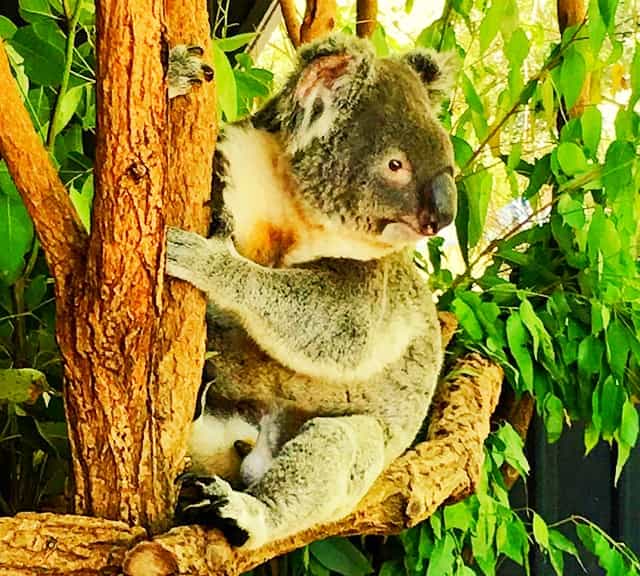
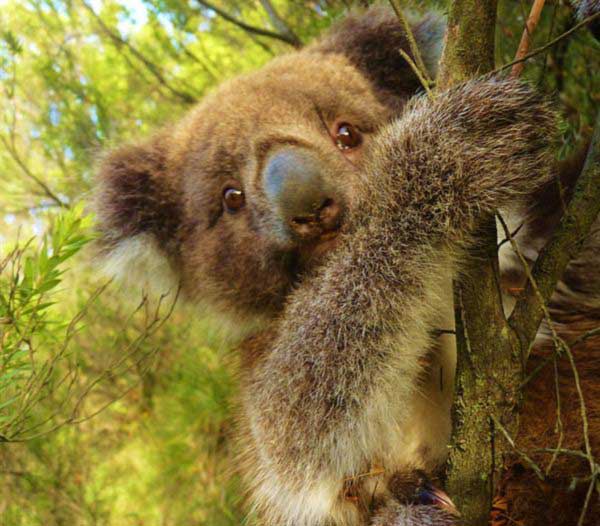
One of the key social behavior which ensures the future generations of the koalas is their breeding and mating behavior. This is perhaps the most important social behavior for the koalas and in fact for all the living beings on the planet earth. Male koalas are capable of breeding from the age of 18 months. Females are capable of breeding from their second year and onwards. Usually the dominant male breeds during the breeding season.
Male koalas are capable of mating at the age of 18 months. Female koalas successfully breed with the male koalas from their second year onwards.
However; non-dominant males are also able to mate successfully as well. Female koalas are usually reluctant to mate with the male koalas and a fight breaks out. It is common for the male koalas to have failed mating attempts with the female koalas. The mating intercourse period lasts for one minute usually and they usually do the sexual intercourse three times. After the mating, the male koala leaves quickly.
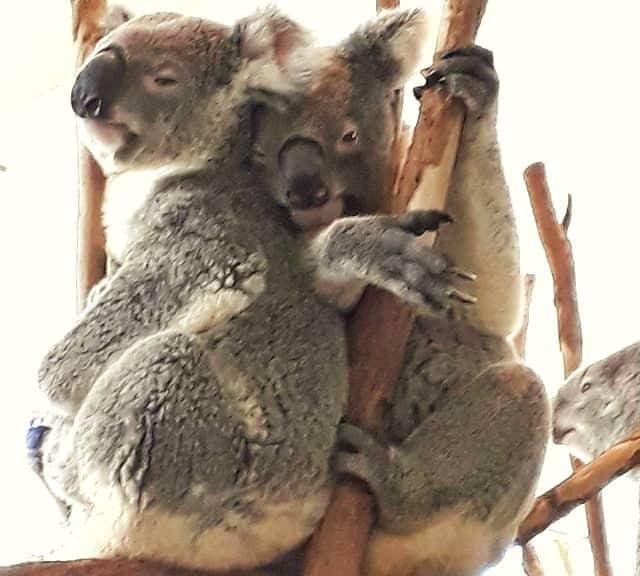
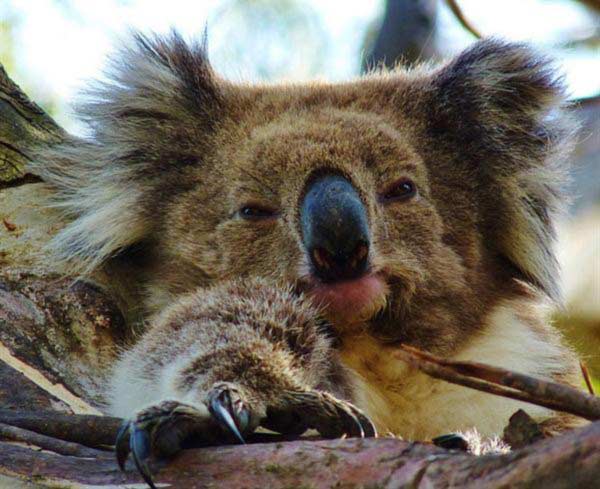
Lastly; another most important and the most adorable social behavior of the koalas include the maternal behavior. Male Koalas make no part in raising the cubs, therefore; the maternal behavior is all in all associated with the female koalas. After the birth; the koala joey completely stays inside its mother's pouch for at least 6 months. Onwards; it comes out of the pouch and starts learning about the world around it.
In maternal social behavior, a koala joey stays completely inside its mother's pouch for almost 6 months. Onwards; when it comes out it stays with its mother at the age of 18 months and sometimes 24 months.
Occasionally; a koala joey also plays with its mother like a puppy. When the koala joey becomes bigger, it clings at the back of its mother most of the time because pouch is too small for it. Often other juvenile koalas allow the koala joeys on their back as well. Juvenile koalas usually stay with their mothers until they become 18 months older. Onwards they live on their own, thereby living a solitary lifestyle.
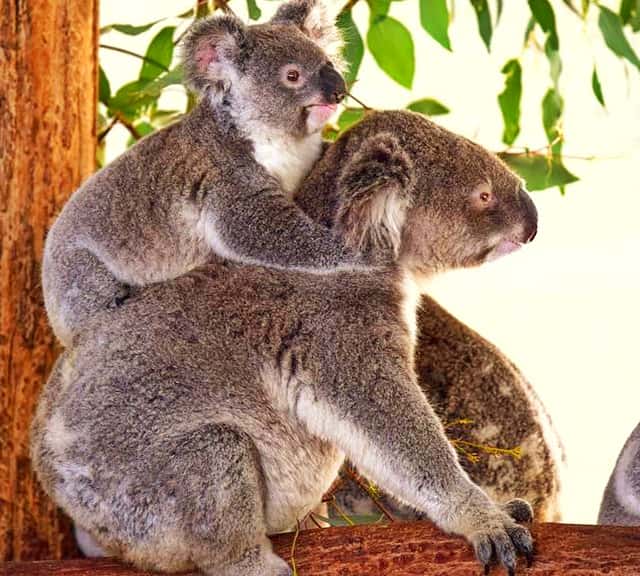
Liger Articles
Marsupials vs. Placental Mammals
Koalas are most popular animals in Australia
Koalas are more popular as compared to Kangaroos
Koalas and their Dominant Nose
Button Shaped Fascinating Eyes of the Koalas
Core Recognizing Features of Koalas
Koalas are the largest tree climbing Mammals in Australia - Koalas as Arboreal
Sizes of Koalas from Queensland, Australia
Sizes of Koalas from Australia's Victorian Origin
Difference between Queensland and Victorian Koalas
Average Weights of Male Koalas
Weighing Male vs Female Koalas
Male Koalas have Loudest of voice among all Australian Mammals
Origin of Koalas & their Evolution
Koalas Population Increased at the end of 20th century
Historical Evolution of the Koalas - A Physical Perspective
Koalas and their Aboriginal and Native Names
It Took 10 years for Aboriginal Australians to Spot and Recognize Koalas
Koalas Live Hardest and Toughest Lives Among all animals
Koalas Tooth Decay through its Abrasive Diet
Koalas Diet is Fully Poisonous and Toxic
Koalas' Food Eucalyptus has Lower Nutrition
Koalas have Lower Energy Levels
Koalas - When Occasionally Spotted on other Leaves for their Food
Why Koalas drink little or no Water?
Koalas & their Advanced Digestive Mechanisms
Why Koalas Sleep more than 20 Hours a Day?
Koalas Lack Energy and Strength
Koala's Tooth from Growth till Tooth Decay
Young Koalas are Better Chewers as Compared to Mature and Elderly Koalas
Why Most Koalas Die of Starvation?
Heat Exhaustion and Heat Strokes among Koalas
Do Koalas lack Intellectual Abilities?
Koalas and their Sense of Smell
Koalas Love Fresh Eucalyptus Leaves as their Food
Koalas' Eucalyptus Leaves' Preferences during summers and Winters
Koalas' Preference for Leaves Having Higher Nitrogen Levels
Koalas Prefer Big Eucalyptus Trees and Love to Stay at Trees' tops.
Koalas Prefer to Live in Areas that have Good Soil and Fertile Lands
Koalas' Per Day Food Consumption
Koalas Food Consumption Depends upon their Body Size
Lactating Female Koalas Consume More Food as Compared to the Normal Female Koalas
Koalas Consume More Food during Winters as Compared to Summers
Female Koalas are very Selective Regarding their Leaf Selection and Food Consumption.
A Baby Koala Joey Lives in her Mother's Pouch for 8 to 9 Months
Gestation Period within Female Koalas
Breeding Behaviors of the Female Koalas
The Size of the Baby Koala Joey at the time of its Birth
Weight of the Baby Koala Joey at the Time of its Birth
At Birth the Baby Koala Joey Travels from Cloaca into their Mother's Pouch
Newborn Koala Joeys have Well-Established Sense of Smell
Koala Joey keeps his Head Inside its Mother's Pouch for 6 Months
Complete Shape and Body Development of the Koala Joey
Pap - The first solid food of the Koala Joeys
When Does Tooth Emerge for Baby Koala Joey?
Aggressive Behavior of Mother Koalas towards their Joeys
Queensland Offers Less Nutritional Values for Koalas
How long does Koalas live? Age of the Koala
Female Koalas Live More than Male Koalas
What is the Average Age of the Male Koala?
Average Ages of the Female Koalas
For How Long a Female Koala can Give Birth to the Koala Joeys?
How many times female Koalas give birth?
Koalas and Australia's Bushfire
Koalas' fur quickly gets rid of rain water
Koalas Resting and Sleeping Postures and Positions during the Hot Summer Seasons
Winter Season and Sleeping Postures of Koalas
Koalas' Urination during Summer and Winter Seasons
Koalas and their Specialized Claws
How does a Koala regulate its Body Temperature?
Food Consumption and Feeding Timings of the Koalas
Koalas Always Prefer Eucalyptus Leaves from the Tree top
How does a Koala Grooms itself?
Koalas' Territories and ranges within Australia's Victorian Areas
Koalas' Territories and Ranges within Australia's Queensland Areas
Behavior of the Alpha Dominant Male Koala
Aggressiveness of Female Koalas
Scent Marking Behavior of the Male Koalas
Mating Strategy of the Male Koalas
Fights and Territorial Encounters of Male Koalas
Sounds and Vocalizations of Male Koalas
Sounds and Vocalization of the Female Koalas
Koalas and their Facial Expressions
Breeding Ages of the Male and Female Koalas
Factors Influencing the Success of Koalas' Fertility Rates
Behavior of the young and adolescent Koala Joey
When Does a Mother Koala Says Goodbye and Leaves the Young Koala Joey?
Playful Behavior of the Young Koala Joeys
Koalas - Mating Season and Mating Months
Koala Informationen, Bilder, Neuigkeit, und Erforschung
Коала - сумчатый млекопитающий